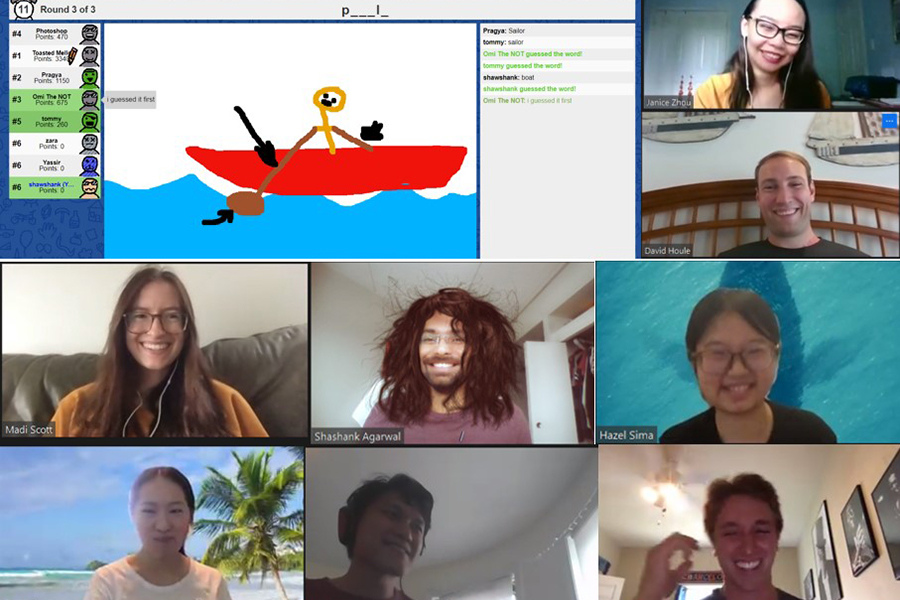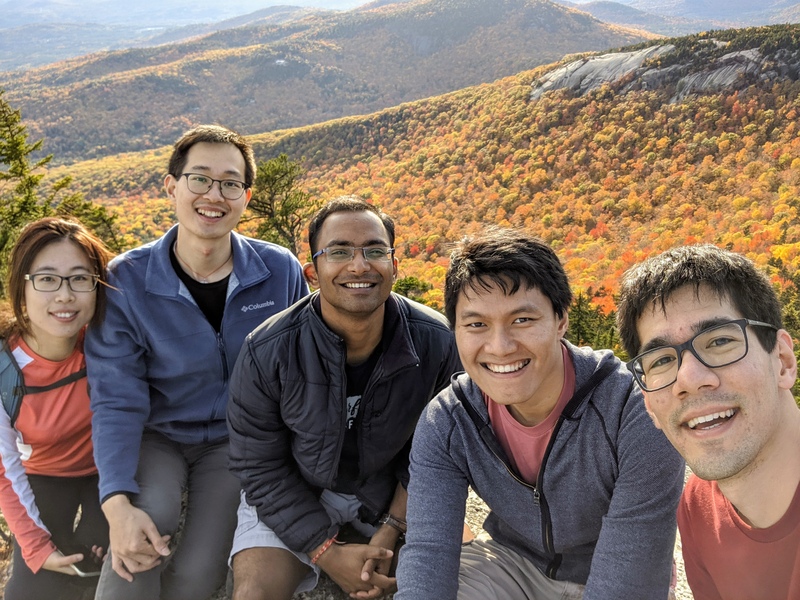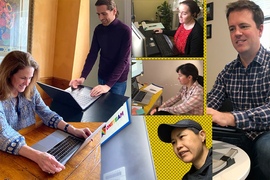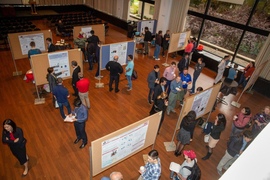MIT’s graduate student orientation is historically a measured, months-long affair, ramping up in the summer with informational webinars and gatherings hosted by alumni around the world, and continuing in the fall with dozens of on-campus events.
This is anything but a typical year, of course. For example, many of the nearly 1,700 incoming graduate students have never set foot on campus; the annual spring visiting week, which allows them to get to know MIT— and particularly their department — was canceled when the Institute closed in mid-March, in response to Covid-19.
Fortunately, incoming students are in good hands. The Graduate Student Council (GSC) Orientation Committee (OC) has been diligently adapting 2020 Grad Orientation ever since then, to welcome, inform, and connect students, wherever they are. As OC committee co-chair Shashank Agarwal wrote in a recent grad blog, “the responsibility of the orientation team towards incoming students is higher than ever.”
Building a virtual community
Orientation encompasses two parts: preorientation, consisting of events and emails during the summer, and on-campus orientation, where students are welcomed to the university in the fall. Working with campus partners, the OC organized monthly preorientation webinars to address students’ concerns, beginning in April. The first webinar featured student representatives from each of the residences sharing their experiences — particularly helpful for students who were trying to choose housing, yet had never been to campus.
Since then, webinars have focused on MIT Medical, the International Students Office (ISO), and the GSC. Additional seminars will be offered in the coming weeks on academic resources, life at MIT, finances, and graduate students with families. The on-campus orientation period, which will run through Sept. 11, has also been reimagined in a virtual landscape.
In addition to relaying information, the OC knew it was crucial to begin to build community among the new cohort. They created a Facebook group that has since burgeoned to about 1,200 users. The intent is to facilitate communication among students and give the OC a sense of what’s on their minds. “This is a space where incoming graduate students can really speak among themselves,” says OC co-chair Maytee Chantharayukhonthorn.
The OC has also found creative ways to engage students through virtual social gatherings. In July, they offered ice-breaker sessions and online games. During the ice breakers, current students hosted chat rooms for groups of about five new students, and every 15 minutes the groups split up and joined a different chat room. Each social was offered at two different times to accommodate students in various time zones. And although they were billed as one-hour events, students stuck around for several hours. “People just wanted to chat. I think they were starving for personal interaction from their colleagues and future mentors,” says Chantharayukhonthorn.
Bert Joannes Vandereydt appreciates the OC’s efforts to build connections in such a topsy-turvy time. Through the Facebook group, Vandereydt — who hails from Belgium and will be starting a mechanical engineering doctorate — found and reached out to another Belgian student. That helped alleviate some of the isolation he felt earlier in the spring, he says. “It’s nice to be in touch with people months before you’re planning on going to MIT,” he says, adding, “I think the GSC has done a good job.”
The power of peers
A new initiative this year, called the Graduate Guides program, is a joint undertaking among the GSC OC, the Division of Student Life (DSL), and the Office of the Vice Chancellor (OVC). “This came about because of this crazy world we’re living in, and thinking, “How do you welcome a student to a campus that they actually can’t see and come to?” explains Naomi Carton, associate dean of graduate residential education.
The program is similar to the Student Success Coaching program launched in the spring, to support students as they adjusted to the new reality of remote learning. Current grad students will be matched with a small group of incoming students to answer their questions, refer them to campus resources, and help them feel connected. “We feel having a person who’s been at MIT acting as a rock for a new student,would be very beneficial for that student,” says Chantharayukhonthorn.
Some departments already have similar programs, notes Carton, but they often follow a one-on-one peer mentoring model. Also, in the Graduate Guide program, guides will intentionally be paired with students from different departments, to broaden their network. “For students who might not be able to come, or they can come but they can’t actually have guests visit or meet up somewhere because of closings and restrictions, this is a nice way to have people at MIT that they can talk to,” Carton says.
The “true definition of teamwork”
Given the unknowns and the many twists and turns this year, Agarwal and Chantharayukhonthorn have managed remarkably well, says Lauren McLean, GSC financial and event assistant in the Office of Graduate Education. But she’s not surprised. “They connect with each other, they bounce ideas off each other, and they respect each other, and that makes a big difference in their ability to cope with fluid situations. They are the true definition of teamwork.”
Perhaps, in part, that’s because they’ve known each other since they arrived at MIT in 2016, as beginning doctoral students in mechanical engineering. They have taken almost every single class together, are in the same research group, took PhD qualifying exams together, and even lived together during their second and third years. “They’re so in sync, it’s a little scary sometimes!” McLean jokes.
They’ve also been involved in graduate orientation planning for years, serving as two of the three co-chairs last year. Chantharayukhonthorn says he enjoys meeting the new students and seeing how excited they are. “Orientation is one of the first things that you experience coming into grad school. We want their first impression to be a good one, and we want to make sure that MIT orientation is a thorough, engaging process where students receive a lot of opportunities to interact with each other.”
Agarwal agrees, adding that he is still in touch with most of the people he met at orientation four years ago. He has an additional motivation this year: given their prior experience, he felt it was more important than ever for the pair to serve as co-chairs again. “It would have been very tricky for a new person to do it. They would not have the context of previous years,” he says. “Because I know how Maytee works, I knew that if both of us were doing orientation, we could use our previous experiences and better the outcomes.”
The teamwork, however, is not limited to the co-chairs. Chantharayukhonthorn and Agarwal appreciate working with McLean, noting that she has been a pillar and invaluable asset to the planning and execution of graduate orientation for years. “We’ve also received so much support and guidance from a long list of organizations across the Institute — Housing, Medical, ISO, OVC, DSL, GSC’s Diversity, Equity and Inclusion Committee, graduate administrators, the student community, and previous orientation chairs and committees — just to name a few. We’re very grateful,” says Chantharayukhonthorn.
There’s more work to be done. But given the inherent uncertainty now, Agarwal and Chantharayukhonthorn hope that new students find the OC’s efforts not only helpful, but also reassuring. That’s certainly the case for Vandereydt. “Right now, I’m more anxious about getting into the country,” he says. “I feel like everything at MIT will fall into place.”










